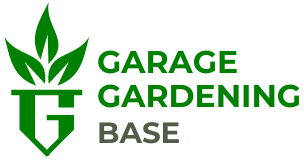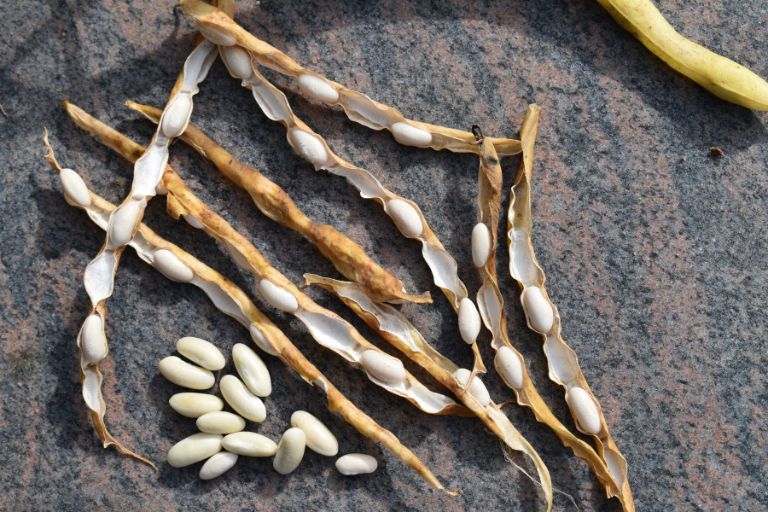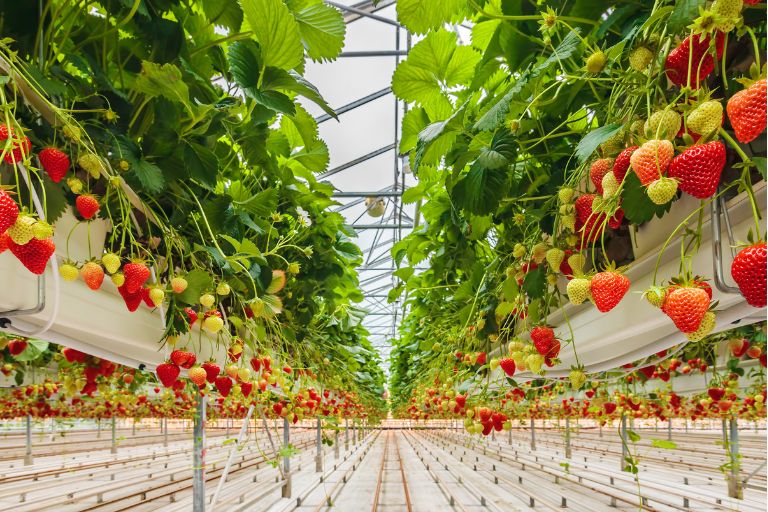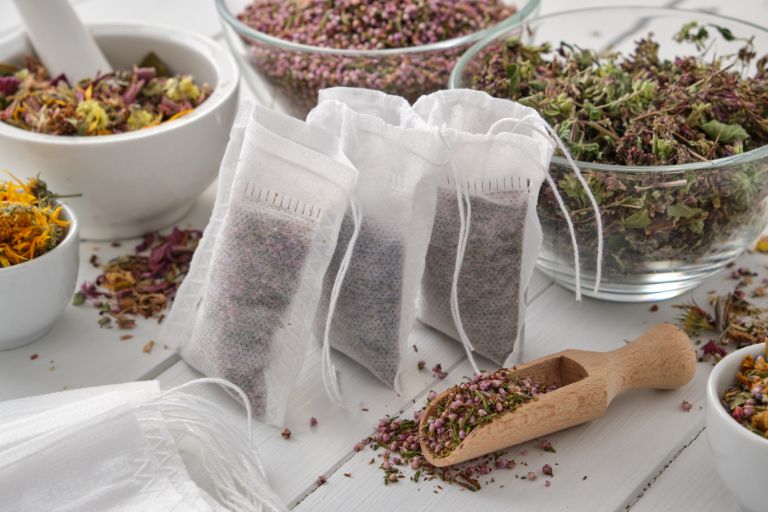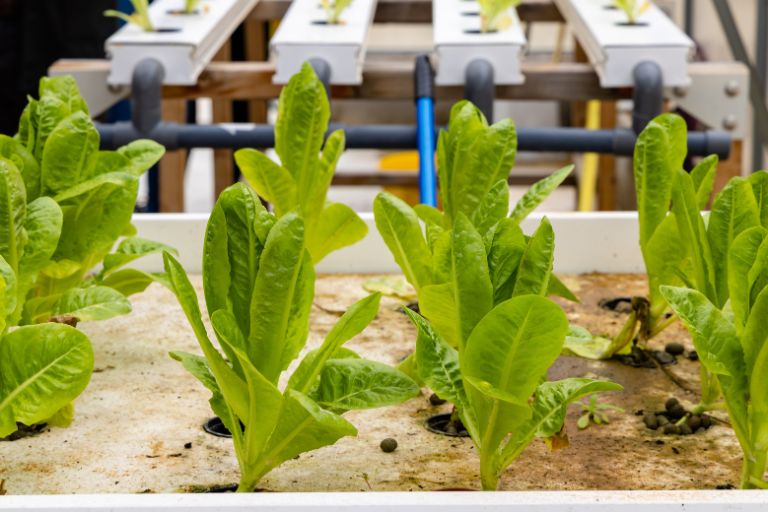Maximising Disease Management in Garage Gardening: Strategies for Healthy Indoor Plants

Indoor gardening has grown in popularity, offering a solution to challenges such as limited space and unfavourable outdoor conditions. Among the various methods of indoor gardening, garage gardening has gained traction, providing a haven for plants protected from the outside elements.
In this article, we explore the area of disease management in garage gardening. Our focus is on maintaining healthy plants and protecting them from the various diseases that can thrive indoors. Whether you’re a seasoned enthusiast or new to gardening, understanding disease prevention and management is essential to maintaining vibrant indoor plants all year round.
As we delve into disease management strategies, we’ll discuss common plant ailments, preventative measures, and techniques for identifying and effectively treating disease. From selecting hardy plant varieties to implementing integrated pest management, we aim to equip you with the knowledge and tools you need to cultivate a thriving indoor garden while minimising the impact of pests and diseases.
Introduction
Garage gardening, a subset of indoor gardening, refers to the practice of growing plants within the confines of a garage or other indoor space. This method of gardening has grown in popularity in recent years due to its versatility and accessibility. Gardeners use garage space to create a controlled environment conducive to plant growth, often using artificial lighting, climate control systems and innovative growing techniques.
Indoor gardening, including garage gardening, offers numerous benefits that appeal to both experienced enthusiasts and beginners. One of the main advantages is the ability to grow plants all year round, regardless of external weather conditions. By providing a stable and controlled environment, indoor gardeners can extend the growing season and enjoy fresh produce or vibrant flowers all year round.
Indoor gardening also allows for efficient use of space, making it an ideal choice for people with limited outdoor space or urban dwellers without access to traditional gardens. Garage gardening in particular allows gardeners to take advantage of unused indoor spaces, such as garages or basements, and turn them into productive growing areas.
Indoor gardening also offers protection from external factors that can affect plant health, such as pests, diseases, extreme temperatures and inclement weather. By bringing plants indoors, gardeners can shield them from potential threats, ensure optimal growing conditions and minimise the risk of crop loss.
Common Diseases in Garage Gardening
Several common diseases can affect indoor plants and pose significant challenges to indoor gardeners. Powdery mildew is a common fungal disease characterised by a white powdery growth on plant surfaces, resulting in stunted growth and reduced vitality.
Another notorious disease is damping-off, which mainly affects seedlings and young plants. Caused by various fungi in the soil, damping-off leads to the sudden collapse and death of seedlings before they can establish.
Root rot is a common problem in indoor gardening, often caused by overwatering or poorly drained soil. This fungal disease attacks the roots, causing them to rot and eventually leading to wilting, yellowing leaves and plant death.
Fungal infections, including various types of mould and mildew, can thrive in the warm, humid conditions often found in indoor environments. These infections can manifest themselves in a variety of ways, such as leaf spots, stem rot or mouldy growth on plant surfaces, affecting plant health and aesthetics.
Combating these common diseases requires vigilance, good hygiene practices and proactive measures to create an environment that is less conducive to their development. By understanding the signs and symptoms of these diseases and implementing appropriate management strategies, indoor gardeners can minimise the risk of disease outbreaks and maintain healthy plants.
Disease development in indoor environments is influenced by a number of factors, many of which are unique to indoor environments compared to outdoor environments. Understanding these factors is critical for indoor horticulturists to effectively manage and prevent disease outbreaks. Some of the key factors that contribute to disease development indoors are limited airflow, humidity levels and proximity to other plants.
Limited airflow is a significant factor that can exacerbate disease problems in indoor environments. Unlike outdoors, where plants benefit from natural air circulation, indoor spaces such as garages or enclosed rooms often lack adequate airflow. Poor ventilation can cause stagnant air to build up around plants, promoting the build-up of moisture and creating an environment conducive to the development of disease. Without proper airflow, pathogens can thrive and spread more easily between plants, increasing the risk of disease outbreaks.
Humidity levels play a critical role in the development of indoor diseases. Many plant diseases, especially fungal infections, thrive in humid conditions. Indoor environments, especially those with limited ventilation, can have elevated humidity levels, providing an ideal breeding ground for pathogens. Excessive moisture on plant surfaces or in the air can lead to the proliferation of fungal spores and the rapid spread of diseases such as powdery mildew, leaf spot and botrytis. Controlling humidity levels through proper ventilation, airflow and moisture management is essential to reducing disease pressure in indoor gardens.
Proximity to other plants is another factor that can contribute to disease development indoors. Indoor horticulture often involves growing plants in close proximity to each other, creating favourable conditions for the spread of disease. Crowded plantings can restrict airflow and increase humidity levels, facilitating the transmission of pathogens between neighbouring plants. In addition, plants in close proximity can compete for resources, weakening their immune systems and making them more susceptible to disease. Proper spacing between plants, along with regular monitoring and sanitation practices, can help minimise the risk of disease transmission and promote overall plant health.
Prevention Techniques
Proactive disease prevention measures are essential to maintaining healthy indoor plants and minimising the risk of disease outbreaks. By taking preventative measures and implementing effective strategies, indoor horticulturists can create an environment that is less conducive to disease development and better equipped to withstand potential threats. Emphasising the importance of proactive disease prevention measures is essential to ensuring the long-term health and vitality of indoor plants.
One of the main reasons for prioritising proactive measures is the challenge of managing diseases once they have become established. Once a disease is established in an indoor garden, it can spread rapidly and cause significant damage to plants before effective control measures can be implemented. By taking proactive steps to prevent disease in the first place, indoor gardeners can avoid the need for reactive measures and minimise the potential impact on plant health.
In addition, proactive disease prevention helps to maintain a balanced and resilient indoor ecosystem. By creating optimal growing conditions and promoting plant health, indoor gardeners can enhance the natural defences of their plants, making them more resistant to disease and other stressors. This holistic approach to gardening focuses on fostering a strong and robust plant environment, reducing the likelihood of disease susceptibility and promoting overall plant vigour.
Proactive disease prevention also involves implementing a range of preventive measures aimed at minimising disease risk factors. This can include practices such as selecting disease-resistant plant varieties, practicing good hygiene habits, monitoring environmental conditions and implementing integrated pest management strategies. By incorporating these preventative measures into their gardening routines, indoor gardeners can create an inhospitable environment for pathogens and pests, reducing the likelihood of disease outbreaks and maintaining healthier plants in the long term.
Maintaining optimal environmental conditions is crucial to the health and success of indoor plants, as it directly affects their growth, development and susceptibility to disease. The following is a guide to ensuring the ideal conditions for your indoor garden:
Temperature
– Most houseplants thrive in temperatures between 18°C and 24°C (65°F and 75°F) during the day and slightly cooler temperatures at night.
– Avoid extreme temperature swings, which can stress plants and make them more susceptible to disease.
– Use a thermometer to monitor indoor temperatures and adjust heating or cooling units as needed.
Humidity
– Aim for moderate humidity levels, typically between 40% and 60%, to create a comfortable environment for most indoor plants.
– Increase humidity levels by using a humidifier, grouping plants together to create a microclimate, or placing trays of water and pebbles under plant pots.
– Reduce humidity levels by improving ventilation, spacing plants to allow better airflow, or using a dehumidifier if necessary, especially in humid climates.
Light exposure
– Determine the light requirements of your houseplants and place them in appropriate locations based on their preferences for direct sunlight, indirect light or shade.
– Provide plants with adequate light by placing them near windows with adequate natural light or supplementing with artificial grow lights, especially in areas with limited sunlight.
– Rotate plants regularly to ensure even light exposure on all sides and to prevent uneven growth or stretching towards the light source.
– Monitor light intensity and duration and adjust as necessary to prevent sunburn or light stress on sensitive plants.
Additional tips
– Consider the specific needs of your plant species and adjust the environmental conditions accordingly. Some plants may require higher temperatures, humidity or light levels than others.
– Use temperature and humidity monitors or smart sensors to track environmental conditions and receive real-time alerts or notifications when levels deviate from optimal ranges.
– Regularly inspect plants for signs of stress or damage caused by environmental factors, such as wilting, leaf discolouration or leaf drop, and make adjustments accordingly.
– Remember that seasonal changes, indoor heating or cooling systems and external factors such as draughts or air conditioning vents can all affect indoor environmental conditions, so be prepared to make adjustments as needed throughout the year.
To minimise the spread of disease in indoor gardening, proper sanitation, watering techniques and spacing are essential.
Hygiene
– Clean and disinfect garden tools, pots and trays regularly to prevent the spread of disease between plants.
– Remove dead or diseased plant material immediately to prevent the build-up of disease-causing organisms.
– Practice good hygiene by washing your hands thoroughly before and after handling plants, especially if you’ve worked with diseased plants.
Watering techniques
– Water plants at the base to avoid wetting the foliage, as damp leaves can encourage the development of fungal diseases such as powdery mildew.
– Use a watering can with a narrow spout or a drip system to direct water directly to the soil without splashing onto leaves.
– Water plants only when the soil feels dry, as overwatering can lead to root rot and other moisture-related diseases.
– Allow excess water to drain freely from pots or trays to prevent waterlogged soil conditions.
Spacing
– Provide adequate spacing between plants to allow good airflow and reduce the risk of disease spread.
– Avoid overcrowding plants as this can create a humid microclimate that favours the development of fungal diseases.
– Regularly thin out crowded areas and cut back overgrown foliage to improve air circulation and light penetration.
– Rotate plants regularly to prevent the accumulation of pathogens in the soil and minimise the risk of disease recurrence.
Additional tips
– Use sterile potting mixes or soilless growing media to reduce the introduction of soil-borne pathogens into the indoor environment.
– Quarantine new plants for a period of time before introducing them to your indoor garden to monitor for signs of disease and prevent potential contamination.
– Monitor plants regularly for signs of disease, including discoloured leaves, spots, wilting or abnormal growth, and take immediate action if symptoms are detected.
– Consider using organic fungicides or biological controls to prevent or control disease, following label instructions carefully to ensure safe and effective use.
Identification and Early Intervention
Recognising the signs of common plant diseases is essential for early detection and effective treatment. The following details some of the most common symptoms:
Discoloration
– Leaf discolouration is a common symptom of various plant diseases. Look for leaves that appear yellow, brown, black or have unusual spots or patterns.
– Discolouration can occur on the upper or lower surface of the leaf and can affect the whole leaf or specific areas.
– Be aware of changes in leaf colour as they can indicate nutrient deficiencies, fungal infections, bacterial diseases or viral infections.
Wilting
– Wilting is a classic symptom of plant stress and can indicate a number of problems including water problems, root disease or pest infestation.
– Look for plants with drooping or limp leaves, stems or flowers, especially during periods of hot weather or prolonged drought.
– Check soil moisture levels to determine if underwatering or overwatering is causing wilting and adjust watering practices accordingly.
Abnormal growth
– Abnormal growth patterns can indicate underlying health problems or disease infections.
– Look for distorted, stunted or misshapen leaves, stems or flowers, as well as unusual growths such as galls, tumours or witches’ brooms.
– Examine plant tissues for signs of deformity, including curled or twisted leaves, elongated stems or abnormal swelling.
Lesions and spots
– Lesions and spots on plant tissue are common symptoms of fungal, bacterial or viral diseases.
– Look for discoloured, sunken or water-soaked lesions on leaves, stems or fruit that may expand over time.
– Note the size, shape, colour and distribution of the lesions and spots as they may vary depending on the type of pathogen involved.
Mould or mildew
– Mould or mildew growth on plant surfaces is often a sign of fungal infection, especially in humid or poorly ventilated environments.
– Look for fuzzy, powdery or downy growths on leaves, stems or flowers, which may be white, grey, green or black in colour.
– Monitor plants closely for the development of mould or mildew, especially in areas prone to high humidity or moisture accumulation.
Prompt action and isolation of affected plants are critical steps in preventing the spread of disease in indoor gardens. The following is some advice on how to deal effectively with diseased plants:
Early detection
– Inspect plants regularly for signs of disease, including discoloration, wilting, abnormal growth, lesions, spots or mould.
– Act quickly at the first sign of symptoms to prevent the spread of disease to other plants in your indoor garden.
Isolation
– Immediately isolate any plant showing symptoms of disease from healthy plants to prevent further spread.
– Move the affected plant to a separate area away from other plants, ideally to a quarantine area designated for diseased plants.
– If space is limited, consider covering the affected plant with a plastic bag or tent to contain potential pathogens and minimise the risk of spreading spores or pests.
Treatment or removal
– Determine the appropriate course of action based on the nature and severity of the disease affecting the plant.
– If the disease is treatable, such as a fungal infection, use appropriate treatment methods, such as applying organic fungicides or removing affected plant parts.
– If the disease is severe or untreatable, consider removing the affected plant entirely to prevent further spread to nearby plants.
– Dispose of diseased plant material carefully to avoid contaminating other plants or surfaces. Seal it in a plastic bag and place it in the rubbish or compost it away from your indoor garden area.
Hygiene
– Thoroughly clean and disinfect any tools, pots, trays or surfaces that have come into contact with the diseased plant to prevent the spread of pathogens.
– Wash your hands thoroughly after handling diseased plants or contaminated materials to avoid transferring pathogens to healthy plants.
Monitor
– Continually monitor isolated plants for signs of improvement or deterioration and adjust treatment strategies as necessary.
– Regularly inspect nearby plants for signs of disease spread and take immediate action if new symptoms or infections are detected.
When it comes to early intervention against plant diseases in indoor gardening, organic remedies and safe fungicides are preferable choices to minimise potential risks to human health and the environment. The following are some organic remedies and safe fungicides that are suitable for indoor use:
Neem Oil
– Neem oil is a natural, herbal fungicide and insecticide derived from the neem tree.
– It effectively controls fungal diseases such as powdery mildew, black spot and rust, and repels pests such as aphids, mites and whiteflies.
– Mix neem oil with water according to the manufacturer’s instructions and apply directly to affected plants using a spray bottle.
Copper-based fungicides
– Copper-based fungicides, such as copper sulphate or copper hydroxide, are widely used organic treatments for fungal diseases.
– They are effective against a wide range of fungal pathogens, including downy mildew, leaf spot and bacterial blight.
– When using copper-based fungicides, follow label instructions carefully to avoid over-application, as copper can accumulate in the soil over time.
Potassium bicarbonate
– Potassium bicarbonate is a natural compound that acts as a fungicide by disrupting fungal cell membranes and inhibiting spore germination.
– It is effective against powdery mildew, black spot and other fungal diseases commonly found in indoor gardens.
– Mix potassium bicarbonate with water and apply as a foliar spray to affected plants, repeating every 7 to 14 days as needed.
Baking Soda
– Baking soda (sodium bicarbonate) is a readily available household ingredient that can be used as a fungicide to control powdery mildew.
– Mix 1 tablespoon of baking soda with 1 gallon of water and a few drops of liquid soap to make a solution, then spray on affected plants.
– Baking soda changes the pH of the leaf surface, making it less hospitable to fungal growth.
Biological controls
– Biological controls, such as beneficial microbes and predatory insects, provide a natural and sustainable approach to managing plant diseases.
– Products containing beneficial bacteria, fungi or nematodes can help suppress fungal pathogens and promote plant health.
– Predatory insects such as ladybugs and lacewings can be introduced into indoor gardens to control pest populations and reduce the risk of disease transmission.
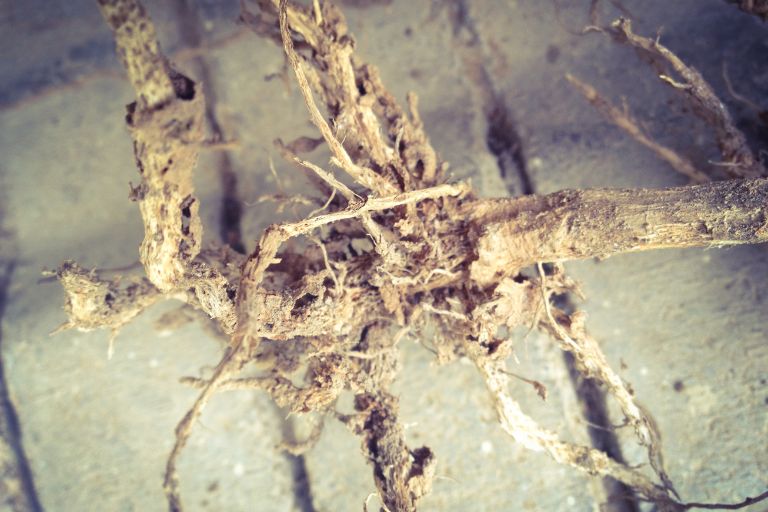
Integrated Pest Management (IPM)
Integrated Pest Management (IPM) is a holistic approach to managing pests, diseases and other potential threats to plants that emphasises prevention, monitoring and environmentally friendly control methods. Using a combination of cultural, biological, mechanical and chemical control strategies, IPM aims to minimise the use of pesticides while effectively managing pest populations and promoting plant health.
In the context of garage gardening, where plants are grown in indoor environments with limited space and controlled conditions, IPM is of great importance. Indoor gardens, including those in garages or other enclosed spaces, are susceptible to a variety of pests and diseases that can thrive in such environments. Factors such as restricted airflow, fluctuations in humidity, and proximity to other plants can create conditions conducive to pest infestations and disease outbreaks.
IPM provides a comprehensive framework for indoor gardeners to address these challenges in a sustainable and proactive manner. By implementing IPM principles, indoor gardeners can:
Identify and monitor pest and disease populations
Regular monitoring of plants allows gardeners to detect early signs of pest infestations or disease outbreaks, allowing timely intervention before problems escalate.
Implement preventive measures
IPM emphasises preventive strategies such as proper sanitation, maintaining optimal environmental conditions and selecting disease-resistant plant varieties to minimise the risk of pest and disease problems.
Use biological controls
Beneficial insects, predatory mites and microbial agents can be introduced into indoor gardens to help suppress pest populations naturally, reducing the need for chemical pesticides.
Use cultural and mechanical controls
Practices such as pruning, mulching and crop rotation can help manage pest and disease pressure, while physical barriers such as row covers or sticky traps can deter pests from attacking plants.
Use chemical controls judiciously
When necessary, IPM encourages the use of the least toxic pesticides as a last resort, applied in targeted applications and according to label instructions to minimise environmental and non-target effects.
The following is an outline of strategies for biological control, mechanical control and cultural practices for sustainable pest and disease management in indoor gardening, particularly garage gardening:
Biological control
Introduction of beneficial insects
– Identify and introduce beneficial insects such as ladybugs, lacewings and predatory mites to the indoor garden.
– These beneficial insects prey on pests such as aphids, mites, whiteflies and thrips, helping to naturally control their populations.
Use microbial agents
– Microbial agents such as Bacillus thuringiensis (Bt) or Beauveria bassiana are used to target specific pests such as caterpillars or fungus gnats.
– These microbial agents infect and kill pests with minimal risk to humans, pets and beneficial insects.
Incorporate biological controls
Encourage natural predators and beneficial micro-organisms by providing habitat diversity such as plant diversity, mulch and shelter.
Mechanical control
Hand picking
– Inspect plants regularly and remove pests such as aphids, spider mites and caterpillars by hand.
– Drop pests into a soapy water solution to prevent them from escaping and re-infesting plants.
Pruning and thinning
– Prune off infected or infested plant parts to prevent the spread of disease and to remove hiding places for pests.
– Thin out overcrowded areas to improve airflow and reduce pest and disease pressure.
Physical barriers
– Install physical barriers such as row covers or mesh screens to prevent pests from accessing vulnerable plants.
– Use sticky traps or yellow sticky cards to catch flying insects such as fungus gnats, whiteflies and thrips.
Cultural practices
Crop rotation
– Rotate crops in different areas of the indoor garden to disrupt pest and disease cycles and prevent accumulation in the soil.
– Avoid planting susceptible crops back to back in the same location.
Soil management:
– Use sterile potting mixes or soilless growing media to reduce the risk of soil-borne diseases and pests.
– Practice good sanitation by removing fallen leaves, debris and plant residues from the growing area to eliminate potential sources of disease.
Water management:
– Water plants at the base to avoid wetting foliage, as damp leaves can promote fungal diseases such as powdery mildew.
– Allow the soil to dry slightly between waterings to discourage soil pests such as fungus gnats and root rot pathogens.
Encouraging the use of natural predators, beneficial insects and non-toxic methods is essential to maintaining a balanced and sustainable indoor ecosystem, especially in garage gardening setups.
Natural predators and beneficials
– Introducing natural predators and beneficial insects into the indoor garden helps control pest populations without the need for harmful chemical pesticides.
– Ladybugs, lacewings, predatory mites and parasitic wasps are just a few examples of beneficial insects that prey on common indoor pests such as aphids, spider mites, whiteflies and thrips.
– By releasing these natural predators into the indoor garden, gardeners can establish a biological control system that keeps pest populations at manageable levels while minimising the risk of pesticide resistance and non-target effects.
Non-toxic methods
– Non-toxic methods of pest control prioritise the use of natural, organic and environmentally friendly alternatives to chemical pesticides.
– Cultural practices such as crop rotation, pruning and sanitation help prevent pest and disease problems by creating unfavourable conditions for their development.
– Mechanical controls such as hand harvesting, trapping and physical barriers provide targeted solutions to manage pest populations without the use of toxic chemicals.
– Biological controls such as microbial agents, botanical insecticides and insecticidal soaps offer effective alternatives to synthetic pesticides while minimising harm to beneficial organisms and the environment.
Benefits of maintaining a balanced indoor ecosystem
– Using natural predators, beneficial insects and non-toxic methods promotes biodiversity and resilience within the indoor garden ecosystem.
– Natural pest control methods help maintain a healthy balance between pests and their predators, reducing the likelihood of pest outbreaks and the need for intervention.
– By avoiding the use of chemical pesticides, indoor gardeners can protect beneficial insects, pollinators and other wildlife, while safeguarding human health and the environment.
– A balanced ecosystem promotes a harmonious relationship between plants, pests and beneficial organisms, resulting in healthier, more resilient plants and a more enjoyable gardening experience overall.
Plant Selection and Diversity
Selecting disease-resistant plant varieties for indoor growing is important for several reasons:
Reduced risk of disease
Disease-resistant plant varieties are bred to withstand common pathogens and have built-in defences that make them less susceptible to disease. By choosing disease-resistant varieties, indoor gardeners can significantly reduce the risk of disease outbreaks and minimise the need for pesticide applications or intensive management practices.
Reduced maintenance
Disease-resistant plants often require less maintenance and intervention, making them an ideal choice for novice indoor gardeners or those with limited time and resources. These plants are generally more resilient and can thrive with minimal care, providing a hassle-free gardening experience.
Increased crop yield and quality
Disease-resistant varieties are less likely to suffer yield loss or quality deterioration due to disease. By growing disease-resistant plants, indoor gardeners can enjoy higher yields of healthy, high-quality produce or ornamental flowers without worrying about disease-related problems.
Promoting diversity in plant selection is essential to minimise the risk of widespread disease outbreaks in indoor gardens. Monoculture, or the cultivation of a single plant species or variety, increases the garden’s susceptibility to disease and pests. In contrast, growing a diverse range of plant species can help disrupt pest and disease cycles, reduce the spread of pathogens and promote a more resilient ecosystem overall.
Recommendations for beginner-friendly plants that are resilient to common indoor gardening challenges include:
Spider plant (Chlorophytum comosum)
Spider plants are hardy, low-maintenance houseplants that tolerate a wide range of indoor conditions, including low light and infrequent watering. They are relatively pest-resistant and easy to propagate, making them an excellent choice for beginners.
Snake plants (Sansevieria spp.)
Snake plants are known for their resilience and ability to thrive in low-light conditions with minimal watering requirements. They are resistant to many pests and diseases and are known for their air purifying properties, making them a popular choice for indoor gardens.
Pothos (Epipremnum aureum)
Pothos plants are versatile, easy-to-grow vines that tolerate low light and irregular watering. They are relatively pest-resistant and can withstand a range of indoor conditions, making them suitable for beginners and experienced gardeners alike.
Peace Lily (Spathiphyllum spp.)
Peace lilies are elegant, low-maintenance plants known for their tolerance of low light and occasional neglect. They are relatively resistant to pests and disease and produce beautiful white flowers that add beauty and air purifying benefits to indoor spaces.
ZZ plant (Zamioculcas zamiifolia)
ZZ Plants are hardy, drought-tolerant plants with glossy dark green foliage that add a touch of elegance to interiors. They are highly resistant to pests and diseases and thrive in low light, making them ideal for beginners and busy individuals.
Maintenance and Monitoring
Regular monitoring and maintenance routines are the cornerstones of successful indoor horticulture and play a crucial role in ensuring the health and vitality of indoor plants, while preventing problems from escalating into more serious issues. The importance of these routines cannot be overstated, as they provide indoor gardeners with valuable insight into the health of their plants and allow for timely intervention to address any emerging issues. In the following, you’ll find an in-depth look at why regular monitoring and maintenance is essential, as well as a comprehensive checklist for routine inspections:
Importance of regular monitoring and maintenance
Early detection
Regular monitoring allows gardeners to detect signs of pest infestation, disease, nutrient deficiency or environmental stress at their earliest stages. By spotting problems early, gardeners can take prompt action to prevent them from becoming more serious and potentially causing irreparable damage to plants.
Prevention
Proactive maintenance routines help prevent problems from occurring in the first place, minimising the need for reactive measures. By implementing practices such as proper watering, sanitation and environmental adjustments, indoor gardeners can create an environment that is less hospitable to pests and diseases, reducing the likelihood of outbreaks.
Optimise
Regular assessments of plant health and environmental conditions allow gardeners to optimise growing conditions for indoor plants. By making adjustments based on these assessments, such as fine-tuning temperature, humidity and light levels, gardeners can promote optimal plant growth and development, resulting in healthier and more productive plants.
Checklist for routine inspections
Assess plant health
– Check the overall appearance of the plants, examining leaf colour, texture and growth patterns.
– Look for signs of wilting, yellowing, browning or drooping leaves, which may indicate water stress, nutrient deficiency or pest infestation.
– Check for abnormal growth, such as stunted growth, distorted leaves or deformed flowers, as these may indicate underlying health problems or disease infections.
Look for signs of pests and diseases
– Thoroughly inspect plants for pests such as aphids, spider mites, whiteflies, thrips or fungus gnats.
– Look for symptoms of common plant diseases such as leaf spot, powdery mildew, damping-off, root rot or fungal infections.
– Inspect both upper and lower leaf surfaces, stems and soil for signs of pest activity, damage or disease symptoms.
Adjust environmental conditions
– Monitor temperature, humidity and light levels using appropriate tools such as thermometers, hygrometers and light meters.
– Adjust environmental conditions as needed to maintain optimal growing conditions for indoor plants.
– Ensure adequate airflow, ventilation and air circulation to prevent stagnant air pockets and reduce the risk of disease outbreaks.
Proactive measures to address issues promptly
Implement cultural practices
– Prune diseased or damaged plant parts to prevent the spread of disease and promote healthy growth.
– Remove weeds, debris and leaf litter from the growing area to remove potential disease sources and pest habitats.
Implement biological controls
– Consider releasing beneficial insects or predatory organisms to naturally control pest populations and reduce reliance on chemical pesticides.
– Use microbial agents or biological fungicides to suppress disease-causing pathogens and promote plant health.
Provide nutritional support
– Adjust fertilisation practices based on plant growth and nutrient requirements to ensure adequate nutrition for healthy plant growth.
– Use organic amendments or foliar sprays to supplement soil nutrients and promote overall plant vigour.
Regular monitoring and maintenance are essential practices for successful garage gardening, providing indoor gardeners with the tools and insight they need to cultivate healthy and thriving indoor plants. By prioritising proactive measures and implementing a comprehensive checklist for routine inspections, gardeners can stay ahead of potential problems and prevent them from escalating into major issues. From assessing plant health and checking for signs of pests and disease, to adjusting environmental conditions and implementing timely interventions, each step in the monitoring and maintenance process plays a crucial role in promoting plant vitality and overall garden health.
The importance of selecting disease-resistant plant varieties and embracing diversity in plant selection cannot be underestimated. By choosing resilient plant varieties and incorporating a variety of species into their indoor gardens, gardeners can minimise the risk of widespread disease outbreaks and create a more resilient and balanced ecosystem. By using natural predators, beneficial insects and non-toxic methods, indoor gardeners can maintain a healthy and sustainable indoor environment while reducing reliance on chemical pesticides and promoting biodiversity.
